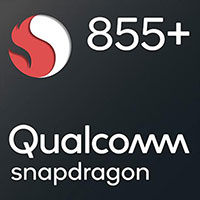
![]()
Drauger OS is a relatively new Linux distro for users with a penchant for games.
Several design elements make this Linux gaming platform different from typical distributions that merely pack digital titles. However, it lacks a few productivity tools that otherwise would make this Linux choice a daily computing driver out of the box.
Drauger OS, a Linux distribution based on Xubuntu, uses a modified Xfce4.12 desktop environment and runs only on 64-bit (x86_64) computers; no 32-bit gear is supported.

This is a distro targeting game players who want good desktop performance. It ships with Steam installed by default, along with WINE and PlayOnLinux. Drauger OS also comes with the modified, low-latency, Liquorix Linux kernel.
Liquorix is a distro kernel replacement to optimize multimedia and gaming applications. It is based on the ZEN kernel for balancing responsiveness at the cost of throughput and power usage.
The adapted Xfce desktop environment in this distro does not have a traditional panel placed along the bottom edge of the display. Instead, its desktop bar by default appears horizontally in the upper portion of the screen.
The bar’s positioning mimics the appearance and functionality of a gaming console, according to the developer. I found that design to be mostly dysfunctional, however.
It becomes an eyesore when using menu functions. Once most games load, there is little need to have a panel pop over gaming windows that have their own menus and control devices.
Some relief is available by changing the panel settings to reorient the bar vertically along the left edge f the screen. A better solution is giving the user the ability to put the desk bar at the bottom or top of the screen.
While appealing to game players who want a Linux-based platform, this distro is not for all users. It especially is not a computing platform for everyday use.
Drauger OS does not come with certain basic non-gaming applications, such as audio and video editing software or an office suite. Of course, you can add what is missing.
Weighing the Concepts
Developer Thomas Castleman debuted his specialty distro in early 2018. He released Drauger OS 7.4.1, code-named “Jiangshi,” in mid-August. He uses an unconventional release naming scheme.
Drauger OS 7.4.1 is based on a recent long-term support version of Xubuntu 18.x. When booting, however, the splash screen displays Ubuntu 7.4.1.
This release is the first version of Drauger OS to have multilingual support. In addition to the English language, it now has support for both Chinese (Simplified) and Hindi.
Chalk that up to a distribution strategy. China and India have the largest populations within their borders. By supporting Hindi, Chinese, and English, a vast majority of potential users already will be able to use Drauger OS right out of the box.
Castleman created Drauger OS for several reasons. The chief aim was to fill the void due to numerous mainstream options for gaming distributions either falling abandoned, being difficult to use, lacking a large-enough or vocal-enough community of supporters, or a combination of these failings.
To prevent those issues from hampering Drauger OS, the developer established several goals for his distro. One such goal was recruiting others who were willing to help with its development.
Other goals included making the distro intuitive to use with reliable functionality. Growing a vibrant community will help keep Drauger OS prospering. So will making it easy for users to get support.
Gaming by Design
Drauger OS is first and foremost a Linux operating system. Its primary purpose is to provide a convenient place to play games that are designed to run elsewhere.
The framework for doing that is fairly successful. The distro comes with preinstalled and configured applications for getting and playing game-console-style software. In essence, this distro packages several tools that provide a platform for game playing within the Linux OS.

PlayOnLinux lets you run some popular Windows games on Linux. Steam lets you play current popular games such as Skyrim, Fallout 3 and Fallourt 4, Deus Ex: Mankind Divided and Metro Last Night. Also preinstalled is WINE, which lets you run many Windows programs — games included — within Drauger OS.
The Drauger Installer app is preinstalled to make it easy to add .deb files to the system. The .deb package is the bundling format for Debian/Ubuntu-based operating systems. It provides an easy way to install dozens of games designed to run within Debian Linux distros.
Drauger OS has support for most Xbox and Xbox 360 controllers as well as some Playstation controllers.
Look and Feel
Drauger OS resembles typical Xfce desktop integrations or Xubuntu/Ubuntu-based distributions. It is easy to install and use, especially for Linux newcomers.
For any user, the most bizarre aspect of using Drauger OS comes from the design of the nontraditional panel bar, which in this distro is the desktop bar.
At first it seems to be a wildcard. Inadvertently left-clicking on the mouse or making a stray scratch on a touchscreen causes the bar to pop up across the upper portion of the computer screen. Getting rid of it can be frustrating at first.

Deliberately left-clicking on the desktop launches the desk bar. So does pressing the Windows key on the keyboard.
Sometimes clicking on an app window or anywhere on the desktop causes the bar to disappear. Sometimes pressing the escape key does as well.
The panel settings let you have the bar always visible. That option keeps a large distracting object right at eye level.
The always-hide option can be a recurring inconvenience. Parking the desktop bar along the left edge of the screen seems the least bothersome choice.

Bar Navigation
The top line in the desktop bar provides icons for quick access to the most commonly used apps and widgets. The bottom line contains buttons for currently open windows plus buttons for shutting down and logging out.
Panel bar space is limited. To see open windows not visible on the panel real estate, click the dropdown arrow underneath the open app’s icon. To view apps to launch, click the triangle button (which is the Drauger OS logo) on the far left of the top line of the desktop bar.
Four squares are somewhat visible in the black background on the right end of the top line of the desktop bar. These are the virtual workspaces. Click the box to navigate to any of the four virtual desktops. Four is the hardwired limit.
To launch the main menu, get the desk bar to appear on the desktop. Click the menu button at the far left of the bar. That pops up a two-column square panel. The software categories are displayed down the right edge. The applications display along the left edge.
Also, you can right-click on the desktop to launch a traditional Xfce condensed menu.
Weird Features Excel
Drauger OS does not support UEFI systems. The installation process uses SystemBack, which is buggy and prone to failure.
Otherwise, installation is reasonably fast and non-challenging. Install using BIOS or legacy mode instead.
Complete — and relatively simple — installation instructions are provided in a readme.pdf file. Launch it from the Welcome panel that displays when you load the live session. Print the file or save it to an external source for reference when installing.
Another peculiar feature is the process of updating software. The distro has two separate update paths.
To update apps, the core system and all the Ubuntu software, use the Software Updater tool under the software drop-down menu in the desktop bar.
To update software you added to the Drauger OS, plus get bug fixes, additional features, security and performance improvements, you must use the built-in updater script via the command line using the terminal window.
Bottom Line
This distro lacks an OS upgrade mechanism. So upgrading to the next release requires a fresh installation. However, system updates to the existing installation come from Ubuntu and are regularly updated by Drauger OS.
If you play around with the live session, the default user name is “user” or “default.” The default password is “toor.”
Complete instructions are found in the Readme.pdf file. Also, check out the Welcome screen. It provides access to help files and shows buttons that open links to the distribution’s website, launch a tool for installing third-party drivers, and link to some online resources.
There is also a tutorial button on the Welcome screen that opens a series of pop-up messages about the desktop elements. The welcome window is pretty straightforward to use and navigate.
Want to Suggest a Review?
Is there a Linux software application or distro you’d like to suggest for review? Something you love or would like to get to know?
Pleaseemail your ideas to me, and I’ll consider them for a future Linux Picks and Pans column.
And use the Reader Comments feature below to provide your input!
























































I see titles which actually are said to run on a linux distro.
But they actually are not stable at all.
For instance skyrim and other games which can be modded do not run steady.
I actually know for sure it just as limited as the steam os released earlier.
I want to see at least a video proofing that it can run games steady and especially important can run them modded ( like skyrim, skyrim s.e.
However i AM pretty sure it can’t run stable.
The other thing which scared me from testing that its based xubuntu, i like to stay far away from any ubuntu based os.
In the paste it was once my favorite but in time it became clear to me that i had to stay away from ubuntu and clones.
The reason its simple its like running windows or ios full of unneeded crapware.
Many linux fans do who like their privacy will agree with me for that reason.
Hi, Wormwood. Thanks for your comments. To answer your question on the Linux Mint problems, the diatribe from the high and mighty naysayers on that forum convinced me to walk away. There hasn’t been any apparent movement from the LM developers to deal with the poor performance issues I referenced in my request for fixes.
I did apply some of the major system adjustments one of the regular forum users offered. Those adjustments helped improve performance slightly but not enough to make my continued use of LM worthwhile. I found a better solution.
Having reviewed the Feren OS Linux Cinnamon desktop edition, I described it as a better option. I found Feren OS had NONE of the performance issues on the same three computers that LM couldn’t handle. So Feren OS is my LM replacement with no regrets.
I received numerous responses from other readers confirming that they had the same kind of trouble with LM 19 and 19.1 that I had detailed. One distro developer contacted me to report that he, too, found the same types of performance troubles with LM 19 and 19.1. That led him to use LM 18 as the base for his own distro.
So the lesson learned is the real value of the Linux OS. It has vast problem-solving options. Users do not have to settle for underperforming distros and negative criticisms from forum and/or developer "insiders" who can’t accept that their product may be less than ideal.
Drauger does indeed seem to be a compelling, special purpose Linux distribution, with a good future. A little more polish is all that’s needed, but what distro, no matter what state it’s in, can’t use a little more polish? It seems to have all the basics needed to be a very good gaming platform. The website indicates a strong commitment to ongoing development.
By the way (different topic): several months ago, you indicated you were having some rather, umm, less-than-professional reactions from a particular SBC manufacturer’s forums/website; and that you’d report more later. Anything to report?